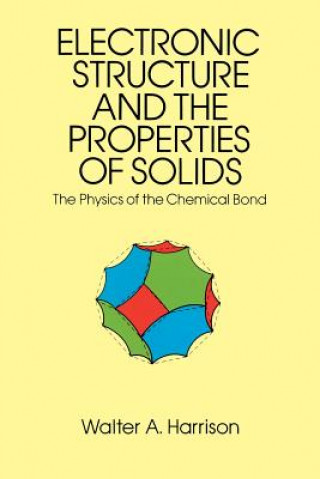
Kód: 02067968
Electronic Structures and the Properties of Solids
Autor Walter A Harrison
Part I. Electron states 1. The quantum-mechanical basis A. Quantum mechanics B. Electronic structure of atoms C. Electronic structure of small molecules D. The simple polar bond E. Diatomic molecules 2. Ele ... celý popis
- Jazyk:
 Angličtina
Angličtina - Vazba: Brožovaná
- Počet stran: 582
Nakladatelství: Dover Publications Inc., 1990
- Více informací o knize

Mohlo by se vám také líbit
-

Chi Self-Massage
301 Kč -

Magnetism and Magnetic Materials
2046 Kč -

Thermal Energy Storage for Sustainable Energy Consumption
10160 Kč -

Students' Awareness of Climate Change and Awareness Raising Strategies for Junior Colleges in the Emerging Megacity of Hyderabad
866 Kč -

Hope Vendetta
688 Kč -

DOT TO DOT WIPE CLEAN ACTIVITY BOOK
427 Kč -

Choose to Climb - Reaching Your Personal Summit
486 Kč -

Two Sources of Morality and Religion
1007 Kč -

Selected Poems and Songs
310 Kč -

Dispute Settlement Reports 2009: Volume 1, Pages 1-622
7443 Kč -

Between Sundays
471 Kč -

Nineteen Eighty-four
247 Kč -

Panie k deťom a na upratovanie
201 Kč -

Slovo ako dotyk
286 Kč
Dárkový poukaz: Radost zaručena
- Darujte poukaz v libovolné hodnotě a my se postaráme o zbytek.
- Poukaz se vztahuje na celou naši nabídku.
- Elektronický poukaz vytisknete z e-mailu a můžete ihned darovat.
- Platnost poukazu je 12 měsíců od data vystavení.
Více informací o knize Electronic Structures and the Properties of Solids
Nákupem získáte 71 bodů
 Anotace knihy
Anotace knihy
Part I. Electron states 1. The quantum-mechanical basis A. Quantum mechanics B. Electronic structure of atoms C. Electronic structure of small molecules D. The simple polar bond E. Diatomic molecules 2. Electronic structure of solids A. Energy bands B. Electron dynamics C. Characteristic solid types D. Solid state matrix elements E. Calculation of spectra Part II. Covalent solids 3. Electronic structure of simple tetrahedral solids A. Crystal structures B. Bond orbitals C. The LCAO bands D. The bond orbital approximation and extended bond orbitals E. Metallicity F. Planar and filamentary structures 4. Optical spectra A. Dielectric susceptibility B. Optical properties and oscillator strengths C. Features of the absorption spectrum D. chi subscript 1 and the dielectric constant 5. Other dielectric properties A. Bond dipoles and higher-order susceptibilities B. Effective atomic charge C. Dielectric screening D. Ternary compounds E. Magnetic susceptibility 6. The energy bands A. Accurate band structures B. LCAO Interpretation of the bands C. The conduction bands D. Effective masses E. Impurity states and excitons 7. The total energy A. The overlap interaction B. Bond length, cohesive energy, and the bulk modulus C. Cohesion in polar covalent solids 8. Elasticity A. Total energy calculations B. Rigid hybrids C. Rehybridization D. The Valence force field E. Internal displacements, and prediction of c subscript 44 9. Lattice Vibrations A. The Vibration spectrum B. Long range forces C. Phonons and the specific heat D. The transverse charge E. Piezoelectricity F. The Electron-phonon interaction 10. Surfaces and defects A. Surface energy and crystal shapes B. Surface reconstruction C. The elimination of surface states, and Fermi level pinning D. Adsorption of atoms and the 7 x 7 reconstruction pattern E. Defects and amorphous semiconductors F. Photothresholds and heterojunctions 11. Mixed tetrahedral solids A. Tetrahedral complexes B. The crystal structure and the simple molecular lattice C. The bonding unit D. Bands and electronic spectra E. Mechanical properties F. Vibrational spectra G. Coupling of vibrations to the infrared Part III Closed-shell systems 12. Inert-gas solids A. Interatomic interactions B. Electronic properties 13. Ionic compounds A. The crystal structure B. Electrostatic energy and the Madelung potential C. Ion-Ion Interactions D. Cohesion and Mechanical Properties E. Structure Determination and Ionic Radii 14. Dielectric properties of ionic crystals A. Electronic structure and spectra B. Dielectric susceptibility C. Effective charges and ion softening D. Surfaces and molten ionic compounds Part IV Open-shell systems 15. Simple metals A. History of the theory B. The Free-electron theory of metals C. Electrostatic energy D. The empty-core pseudopotential E. Free-electron energy F. Density, bulk modulus, and cohesion 16. Electronic structure of metals A. Pseudopotential perturbation theory B. Pseudopotentials in the perfect lattice C. Electron diffraction by pseudopotentials D. Nearly-free-electron bands and Fermi surfaces E. Scattering by defects F. Screening 17. Mechanical properties of metals A. The band-structure energy B. The effective interaction between ions, and higher-order terms C. The phonon spectrum D. The electron-phonon interaction and the electron-phonon coupling constant E. Surfaces and liquids 18. Pseudopotential theory of covalent bonding A. The prediction of interatomic matrix elements B. The Jones zone gap C. Covalent and polar contributions D. Susceptibility E. Bonding properties F. Ionic bonding G. Interfaces and Heterojunctions 19. Transition-metal compounds A. d States in solids B. Monoxides: Miltiplet d States C. Perovskite structures; d Bands D. Other compounds E. The Perovskite ghost F. The chemical grip G. The electrostatic stability of Perovskites H. The electron-phonon interaction 20 Transition metals A. The bands B. The electronic properties and density of states C. Cohesion, bond length, and compressibility D. Muffin-Tin Orbitals and the Atomic Sphere Approximation E. d Resonances and transition-metal pseudopotentials F. Local moments and magnetism Appendix A. The One-electron approximation Appendix B. Nonorthogonality of basis states Appendix C. The overlap interaction Appendix D. Quantum-mechanical formulation of pseudopotentials Appendix E. Orbital corrections Solid state table of the elements Bibliography and author index Subject index
 Parametry knihy
Parametry knihy
Zařazení knihy Knihy v angličtině Mathematics & science Physics Applied physics
705 Kč
- Plný název: Electronic Structures and the Properties of Solids
- Autor: Walter A Harrison
- Jazyk:
 Angličtina
Angličtina - Vazba: Brožovaná
- Počet stran: 582
- EAN: 9780486660219
- ISBN: 0486660214
- ID: 02067968
- Nakladatelství: Dover Publications Inc.
- Hmotnost: 773 g
- Rozměry: 234 × 156 × 30 mm
- Datum vydání: 01. July 1990
Oblíbené z jiného soudku
-

Astrophysics for People in a Hurry
404 Kč -

Stellar Evolution, Nuclear Astrophysics, and Nucleogenesis
368 Kč -

CO2 Laser Surgery
1666 Kč -

Life on the Edge
323 Kč -

Geophysics: A Very Short Introduction
283 Kč -

Lectures on Astrophysics
1255 Kč -
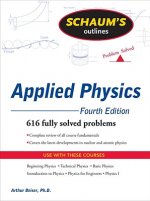
Schaum's Outline of Applied Physics, 4ed
796 Kč -

Atlas of Antarctica
1134 Kč -

Revolutions that Made the Earth
1276 Kč -

Welcome to the Universe
949 Kč -

Introduction to Modern Astrophysics
2523 Kč -

MoonFire
619 Kč -

Feynman's Lost Lecture
249 Kč -

Geology: A Complete Introduction: Teach Yourself
410 Kč -

Black Holes: A Very Short Introduction
249 Kč -
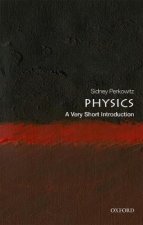
Physics: A Very Short Introduction
249 Kč -

Our Cosmic Habitat
458 Kč -

Origin and Nature of Life on Earth
1452 Kč -

Fundamentals of Fluorescence Microscopy
1772 Kč -

Astrophysics: A Very Short Introduction
249 Kč -

Physics in Biology and Medicine
2874 Kč -

Fundamental Astronomy
2803 Kč -
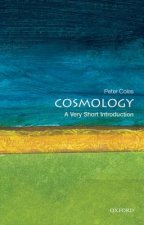
Cosmology: A Very Short Introduction
249 Kč -

Chasing New Horizons
812 Kč -

Principles of Planetary Climate
2193 Kč -

Black Holes, Wormholes and Time Machines
1466 Kč -

Advances in Meteorology, Climatology and Atmospheric Physics
8955 Kč -

Student's Guide to Special Relativity
638 Kč -

Exoplanets
665 Kč -

Stephen Hawking
410 Kč -

Environmental Physiology of Animals 2e
4261 Kč -

Creation Of The Universe
1085 Kč -

Water: A Very Short Introduction
249 Kč -

Galaxies: A Very Short Introduction
249 Kč -

Cell Biology by the Numbers
1418 Kč -

Student's Guide to Atomic Physics
681 Kč -

Atmosphere: A Very Short Introduction
283 Kč -
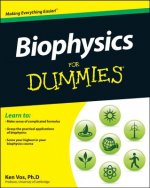
Biophysics For Dummies
479 Kč -

Student's Manual for A First Course in General Relativity
835 Kč -

Stars: A Very Short Introduction
249 Kč -

First Course in General Relativity
1697 Kč -

Introduction to Cosmology
1350 Kč -

Galactic Dynamics
3283 Kč -

University Physics
922 Kč -

Astrophysics through Computation
2573 Kč -

Exact Space-Times in Einstein's General Relativity
2956 Kč -
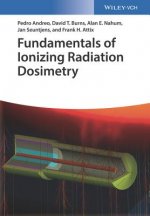
Fundamentals of Ionizing Radiation Dosimetry
5411 Kč -

Stars and Stellar Processes
2336 Kč -

Astrophysics for Physicists
2122 Kč
Osobní odběr Praha, Brno a 12903 dalších
Copyright ©2008-24 nejlevnejsi-knihy.cz Všechna práva vyhrazenaSoukromíCookies



 Vrácení do měsíce
Vrácení do měsíce 571 999 099 (8-15.30h)
571 999 099 (8-15.30h)